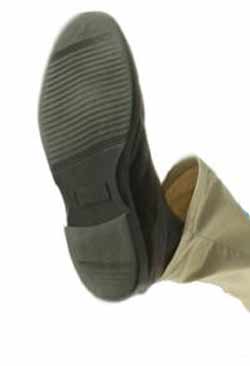
Some gadgets or workouts have been overtaken by trends that have emerged over the past few years, such as specialty studios and wearable tech. Others are just crazes whose time has ended.
To get a consensus on fads that either are or should be heading out the door, I reached out to some of the top personal trainers in the Washington area. You might not agree with their suggestions, but a case could be made for each one.
• Kipping pull-ups: You may have seen a few YouTube videos or perhaps witnessed the marvel of people flipping up like a fish out of water to get their chins over a pull-up bar. Kipping, or the kipping pull-up, is a standard CrossFit move - but other trainers say it needs to be retired.
Research on the effects of kipping is pretty scant, but what these critics fear is that all of the movement it entails puts undue stress on joints and muscles.
"The shoulder joint takes on a lot of unneeded stress while the lower back arches violently," said Kevin Mullins, a strength coach and personal trainer at Equinox. "The kipping pull-up doesn't even develop the back musculature in the way that one would hope either."
Mullins prefers that clients perfect traditional pull-ups. Sure, they're more difficult and you may not get in as many reps as you would with kipping, but ultimately standard pull-ups improve overall form and strength.
• Chest-strap heart rate monitors: It used to be that the best way to track your heart rate during interval runs or cardio kickboxing was to fasten a monitor around your upper torso. Sure, it was a little cumbersome and prone to shifting about during sweaty workouts, but there weren't many other options on the market. That's not true anymore.
Smartwatches and fitness bands have made chest-strap monitors a bit passe, said personal trainer Chris Perrin.
"Heart rate monitor chest straps are a relic of the fitness past," he said. "Every year wearables get more and more innovative. Apple watches along with various other wrist strap monitors, hats and cell phone apps are taking over."
What makes the latest generation of wearable technology so popular is their multitude of functions. Not only can you measure the intensity of your workout, but you can also track calorie intake or the number of steps taken. Focus on features that will be most useful for your workout to narrow down the endless options in the market.
• Balance board training: Completing a set of one-legged squats on a Bosu ball looks pretty boss, but trainers say it's time to keep your feet on solid ground.
For years, experts said exercising on unstable surfaces was a great way to build core strength. But recent studies have questioned the effectiveness of instability training. One Sports Health journal study found that strength training moves such as overhead presses and squats are more effective at kicking core muscles into gear than exercises on unstable surfaces.
If you're looking for routines to firm up your tummy, Mullins said, "A training tool such as TRX straps or sliders can crush the abdominals in place of a Bosu ball."
But you might not want to toss out your balance board just yet: Some trainers say they are still quite useful for making upper-body exercises like push-ups more challenging.
• Steady state cardio: I get it, you like reading the newspaper while pedaling away the pounds on stationary bike. Or perhaps your 45 minutes on the elliptical is the only time you can carve out to catch up on the latest gossip in your favorite celebrity rag. But those one-note exercises are going the way of the dodo bird, trainers say.
"The industry is making a big shift towards shorter, high-intensity workouts versus the longer, steady-state cardio we were once accustomed to," said Maddie Watkins, co-owner of 202 Strong, a CrossFit gym in Washington. "Forget your longer runs or steady bike riding . . . You can get a more effective and efficient cardio workout in just 10 minutes than you can running for 60 minutes."
These days, many aerobic classes include rounds of Tabatas, a form of interval training that relies on a simple pattern of 20 seconds of exercise followed by 10 seconds of rest.
Researchers at the American College of Sports Medicine found that two weeks of high-intensity intervals of running can up your aerobic ability as much as six to eight weeks of jogging on a treadmill.
To get those results, however, you have to really push your body in a way that might not be suitable for everyone. As with every exercise, experts say you should listen to your body and know your limits.
• Big-box gyms: Health clubs are essentially the shopping malls of fitness. You can find just about everything in them, but the options can be overwhelming and the size alienating.
Enter specialty studios. Clubs that focus exclusively on cycling up a pretend hill or plies in first position have eclipsed big-box gyms in popularity. It's almost as if Soulcycle, the grand pooh-bah of boutique fitness, is rivaling McDonald's or Starbucks with all of its new locations.
"People are demanding better classes, more attention and new concepts, all of which they can find in the boutique studio," said personal trainer Gerard Burley (a.k.a. Coach G). "The emergence of more and more studios with higher prices are showing that people don't care about paying a little more for better instruction."
Gyms aren't going down without a fight. Many are adding ballet-inspired barre classes or throwing resistance training into their spin classes to mimic Soulcycle. And to cater to clients who prefer smaller classes, more health clubs now offer group personal training.


 Contact The Editor
Contact The Editor
 Articles By This Author
Articles By This Author
